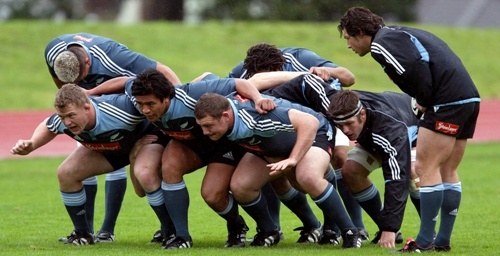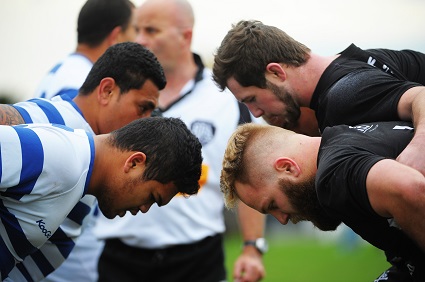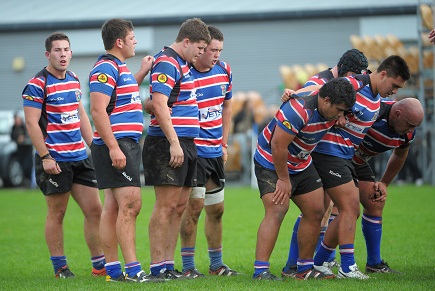- Rugby Toolbox
- Resources & Education
- Learn more
- Articles
- Snook on Coaching
- Loosehead Prop / Tighthead Prop
- Ruck & Run Drill
- Playing Philosophy – Ruck & Run Coaching Components
- Playing Philosophy – Spread the Forwards
- Playing Philosophy – A forward behind the ruck
- Playing Philosophy – Ruck & Run
- Playing Philosophy – An idea!
- The Breakdown
- Building Positivity [3]
- Building Positivity [2]
- Building Positivity
- Fitness and Game Related Activities
- Getting the Head Working
- Missiles are Dangerous
- Use of Video
- Winger Attacking Outside First-Five
- Player Profiling
- Selection
- Fitness Away from the Team Session
- Playing Philosophy (Pre season Prep)
- Coaching the Coaches
- The Rugby Coordinator and Pre-Season Preparation
- Why Not Use Tap Penalties More Often?
- Why Kick the Ball Down the Middle of the Field?
- Defending the 5 Metre Lineout Drive
- Scoring from the 5 Metre Lineout
- What are the Kicking Team Aiming to Achieve from Halfway Restart
- Should We Practice Scoring Tries?
- Team Culture
- Looking After Your Players
- Coach Survival Tips
- Under 11/13 – Backline Defence
- Under 11/13 – Ruck Defence
- Under 11/13 – Back Attack
- Under 13 – The Counter Attack
- Under 11/13 – The Maul
- Under 11/13 – Lineouts
- Under 11/13 – Decision Making
- Under 11/13 – Support Play
- Under 11/13 – Dive Pass and More
- Under 11/13 – Drop & Grubber Kick /Highball Catch
- Under 11/13 – Front on Tackling
- Under 11/13 – Contact – Getting Up – The Ruck
- Under 11/13 – The Coaching Session
- Under 8/10 – Using Space
- Under 8/10 – Kicking
- Under 8/10 – Contact and Picking Up the Ball
- U8/U10 Draw & Pass and Sidestep
- Under 8/10 – The Tackle
- Under 8/10 – The Coaching Session
- Under 7 – Test Your Coaching – Support Play
- Tap Pass and Swerve U7
- Ball Familiarisation; Passing & Receiving
- Activities for the Non-Contact Tackle
- Under 7 – The Coaching Session
- Coaching Teenagers – After the Ruck
- Coaching Teenagers – The Practice Session
- Coaching Teenagers – Best Practice
- Coaching Kids – Best Practice
- Plays from a Tap Penalty
- Running Plays from a 5 Man Lineout
- Driving Plays from a 5 Man Lineout
- Strike Plays at the End of the Lineout
- Back Strike Plays at the Lineout
- Wide Strike at the Scrum (2)
- Wide Strike at the Scrum
- Midfield Attack at the Scrum
- No 8 Plays at the Scrum (2)
- No 8 Plays at the Scrum
- The Cut Out Pass
- Skills to Penetrate (2)
- Skills to Penetrate
- Movements to Penetrate
- Patterns to Penetrate
- Contact and Continuity
- Keeping the Ball Alive Out Wide
- Pre Season Support Activities
- Checklist
- Understanding the game
- The Playing Philosophy
- The Lineout
- Overview
- Team Profile
- Start Now!
- Backrow
- Nine and Ten
- Rugby-related Fitness Activities
- The Psychological Edge
- Open Field Play
- Key Performance Indicators
- Improving Team Performance
- Backline Attack Concepts
- Tactics at Phase Play
- Playing Philosophy
- The ‘Stop Focus’
- Kick Attack
- Clearing the 22
- Wide Attack at Phase
- Player Focus
- Scrum Preparation
- Lineout Preparation
- Back Attack Preparation
- Sevens Preparation
- Sevens Kick Offs
- Sevens Scrum and Lineout
- Sevens Attack Patterns
- Sevens Defence
- 7's Selection and Game Planning
- Coaching and Leadership
- How the Game Evolves
- Changing Within the Game
- Learning from the Television.
- Using Tap Penalties Wisely
- Defence Drills
- Defence Drills for Tight Five
- Team Defence and TUB’ing
- Establishing Patterns from the Ruck
- Structured Phase Play
- Structuring Phase Play on the Run
- Coaching Roles
- Structuring a Close in Tackling/Defensive Session
- Coaching in Threes
- Attacking Back Play
- Kick Off Chase
- Wrap Around Back Plays
- Lineout Plans
- Looking and Learning
- Motivating Your Players
- Scrum Attack
- Refocusing the Team
- Monitoring the Progress
- Learning the Game
- Playing to the Laws
- Small is OK
- Decisions After the Tackle
- Improving Your Coaching
- Food for Thought
- More Food for Thought
- Passing & Catching
- How Ireland Nearly Beat the All Blacks
- The Progressive Coach
- Try Something New
- Encouraging Excitement
- The Mental Approach
- Where to Start
- Being the Best You Can Be
- Off the Ball Decisions
- Lineouts Difficult to Master
- Decisions on the Run
- Rucking and Rolling
- A Successful Approach
- Gaining Clarity
- Manipulation vs Physicality
- Beating the Drift
- To Ruck or Not to Ruck
- Stopping the Lineout Drive
- Fine Tuning the Planning
- It's a Running Game
- RugbySmart 2015
- Using the Shoulders
- Loosehead Prop / Tighthead Prop
- Position Specific – Hooker
- Position Specific – Lock
- Position Specific – Blindside Flanker
- Position Specific – Openside Flanker
- Position Specific – No 8
- Position Specific – Halfback
- Position Specific – First Five Eighth
- Position Specific – Second Five Eighth
- Position Specific – Centre Three-quarter
- Position Specific – Wing
- Position Specific – Fullback
Loosehead Prop / Tighthead Prop

Position Specific – Loosehead Prop / Tighthead Prop
A coach has much to do beyond a game plan if he is to provide guidance for each individual in his team. There is the physical development which as the player gets older needs to be specific to the position of the player, the technical knowledge, understanding and practical application and the the psychological skills that help develop confidence, concentration and attitudes beneficial to the game such as aggression and mental toughness.
In this article we will consider the technical and game understanding requirements for a loosehead prop and tighthead prop in the modern game.
Interestingly when opening up a website to check on the progress of young Reg Goodes, the loosehead for the leading Hurricanes Super Rugby franchise, the statistics provided were 90 tackles made, 11 tackles missed, 89.1% tackle success, 5 turnovers conceded, 33 ball carries, 49 metres made, 4 defenders beaten, 3 off loads made and 26 passes.
The Brumbies tighthead prop Ben Alexander, in a similar amount of game time, produced the following stats. 72 tackles, 21 misses, 77.4% success rate, 6 turnovers conceded, 59 ball carries, 56 metres gained, 1 clean break, 2 defenders beaten, 1 offload, 42 passes and 2 lineout steals.
These statistics emphasise that there is much to do beyond the basic scrummaging and lineout requirements and nowadays the player is judged on a greater variety of skills than ever before. To reach the top level the modern rugby player must demonstrate a high degree of skill in a number of areas but he will still be required to master and dominate the basic scrummaging, lineout and contact skills.
The player profile assessment criteria for a prop will obviously be based on the level and age of the player with consideration given to some of the following requirements of the position.
LINEOUT: explosive and accurate lifting / completing the lift with a strong supporting or driving body position and being bound up / understanding and carrying out movement in the line so that the lift is carried out at the correct spot with the correct timing / understanding the role and technical requirements if not required in the lift – driving; peeling off; attacking runner / understanding the role and being technically proficient in any form of defensive lineout – driving in to the gaps; destabilising the support players; dynamic lifting ….
SCRUM: at every level emphasis should be placed on the development of good body shape, power generation from the upper body and legs and stability necessary to control the delivery of the power. It is more productive to develop these skills with individual and small unit coaching.
The primary role for the loosehead is to ensure his hooker is not under pressure and can channel the ball by staying square.
The primary role for a tighthead is to keep the right side up and square on the hit to assist scrum stability.
CONTACT: tackling in close and front on will be crucial as well as being able to fulfill the tackling role a defensive line at phase play. This will entail being able to keep the structure in the defensive line, stay connected with his inside and outside man, and make the correct decision on whom he will tackle. Then of course there are the technical requirements of front on and side on tackles to stop the man and slow the ball. The tackle is not completed until the tackler is back on his feet and recovering the ball or taking up the space or taking up a defensive role. There is much to do.
These skills as mentioned in the tackle recovery must be taught and practiced also.
Carrying the ball in to contact, beating a defender, keeping the ball, offloading in or through the tackle are all skills that need to be mastered for the team to maintain continuity. It is not sufficient anymore for the prop just to set up a ruck so he needs practice situations where he has to make a decision based on what the defence are doing, how many numbers there are and what his support players are anticipating.
The support players in contact must be able to clean out to clear the ball, or protect the ball from the opposition, pick the ball and drive or pass, or run on to the ball to receive an early pass or an offload. These decisions all require the player to be looking and thinking ahead so the coach needs to set up various scenarios in his practice sessions.
RUN & PASS: Of course the major development has been selecting props who can run and pass and get in to good support positions so this player needs to practice the variety of passing techniques whether in close and popping or in the attack line at phase and passing to his left or right.
Plenty of game type activities will ensure he knows when to pass, who to pass to, and when not to pass.
KICK OFF RECEIPTS: The loosehead will also have a role at kick off receipts where he may be required to lift the receiver and protect him or join the drive once the ball has been taken in. His role may be as a runner from this platform or he may be required to know his role from a split kick off if the ball is kicked to the other side. Where does he go?
What is his role now?
PERSONAL STRENGTHS: The coach needs to discover what his player is really good at that if developed will give him a skill that places him in a different category than his opposite. He may be an explosive ball carrier so situations should be set up for this to happen. He may be a big hitter in the tackle so he could practice being the third man out in the line and come in and blindside the ball carrier. He may be fast on his feet and able to beat the first defender each time so make sure he receives the ball in midfield and is coached in the offload. There is bound to be something.
A check list could be drawn up by taking a topic and researching the requirements on The Coaching Toolbox.
This is just a summary of what a prop needs to develop to improve. You must research each skill by viewing it on television a video, reading and researching the detail, or talking to an appropriate person. Preferably doing all of these would be the idea.
Good luck.